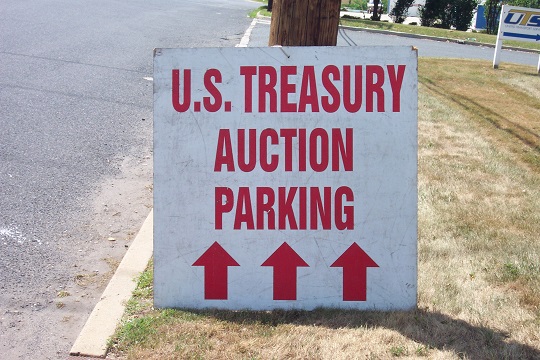 If you’ve been following along in our blog series, you’re starting to see why the government is such a great source for seized and surplus assets. It has numerous agencies, some of which have been empowered to seize or confiscate an individual’s property for breaking the law, and others that spend billions of dollars on assets, which they themselves use and must eventually dispose of. The agency that we will be discussing here today falls into the first category, and it is notorious for seizing people’s assets for failure to do one simple thing, and that’s pay their taxes. Let’s start by talking about the broader U.S. Department of the Treasury, which includes the IRS.
If you’ve been following along in our blog series, you’re starting to see why the government is such a great source for seized and surplus assets. It has numerous agencies, some of which have been empowered to seize or confiscate an individual’s property for breaking the law, and others that spend billions of dollars on assets, which they themselves use and must eventually dispose of. The agency that we will be discussing here today falls into the first category, and it is notorious for seizing people’s assets for failure to do one simple thing, and that’s pay their taxes. Let’s start by talking about the broader U.S. Department of the Treasury, which includes the IRS.
What is the U.S. Department of the Treasury?
The Department of the Treasury was established in 1789 to manage government revenue. The Treasury prints and mints all paper currency and coins in circulation. It also collects all federal taxes through the Internal Revenue Service, and manages the government’s debt.
Where does the Department of the Treasury get stuff it auctions off?
There’s a reason why accountants frequently dispense the advice “Don’t mess with the IRS.” The first major source of assets for the treasury department is the IRS, which has the power to seize anything a person owns of value for failing to pay their taxes. This includes houses, jewelry, cars, boats, planes, and businesses. Not only can the IRS take your property, but you can also face fines and imprisonment for failing to pay or fraudulently reporting on your taxes. Despite this, countless people fail to pay their taxes every year and the IRS is able to seize millions of dollars in assets.
The second major source of assets for the Treasury Department is from people who violate federal laws such as counterfeiting. Property acquired with these illegal funds is also confiscated and auctioned off to the public.
How are Treasury Auctions Conducted?
Treasury auctions are somewhat different from other auctions we have discussed in that some of them are conducted through a sealed-bid auction rather than a public auction. In this type of auction all bidders simultaneously submit sealed bids to the auctioneer, so that no bidder knows how much the other auction participants have bid. The highest bidder is declared the winner. In a public auction bidders verbally call out their bids, and the auction ends when no one is willing to pay more than the highest bid.
What you need to know?
- Each year approximately 300 auctions are conducted throughout the United States and Puerto Rico to sell seized/forfeited property.
- There is a 180-day redemption period for seized assets, during which the tax offender can pay their taxes and have the property returned to them. Thus, if you are the winner of the auction, you will have to wait 180 days before the property will be transferred over to you. Furthermore, the owner, his heirs, or any person that has an interest in the property (such as a lien-holder) can come forward and pay the taxes, penalty, and interest owed.
- While you are waiting out the 180-day redemption period you will receive an interest of 20% annually on your money, so even if they tax offender pays up, it’s a WIN for you.
- The IRS only accepts Cash or Certified funds at their auctions. You can bring a combination of both since you do not know what the final price will be. For example if you think a car will sell for around $7,000, you can bring a certified check for $5,000 and and $2,500 in cash, just in case.
Start looking for Seized stuff from the United States Department of the Treasury by activating your free trial account right now!





